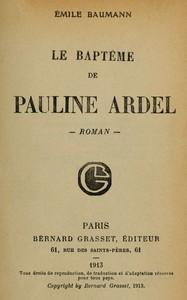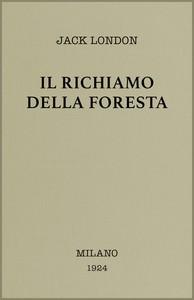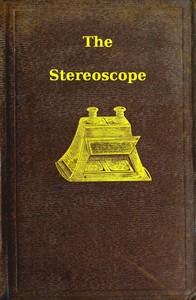Read this ebook for free! No credit card needed, absolutely nothing to pay.
Words: 67171 in 14 pages
This is an ebook sharing website. You can read the uploaded ebooks for free here. No credit cards needed, nothing to pay. If you want to own a digital copy of the ebook, or want to read offline with your favorite ebook-reader, then you can choose to buy and download the ebook.
ON THE STEREOSCOPE.
INTRODUCTION.
When the artist represents living objects, or groups of them, and delineates buildings or landscapes, or when he copies from statues or models, he produces apparent solidity, and difference of distance from the eye, by light and shade, by the diminished size of known objects as regulated by the principles of geometrical perspective, and by those variations in distinctness and colour which constitute what has been called aerial perspective. But when all these appliances have been used in the most skilful manner, and art has exhausted its powers, we seldom, if ever, mistake the plane picture for the solid which it represents. The two eyes scan its surface, and by their distance-giving power indicate to the observer that every point of the picture is nearly at the same distance from his eye. But if the observer closes one eye, and thus deprives himself of the power of determining differences of distance by the convergency of the optical axes, the relief of the picture is increased. When the pictures are truthful photographs, in which the variations of light and shade are perfectly represented, a very considerable degree of relief and solidity is thus obtained; and when we have practised for a while this species of monocular vision, the drawing, whether it be of a statue, a living figure, or a building, will appear to rise in its different parts from the canvas, though only to a limited extent.
In these observations we refer chiefly to ordinary drawings held in the hand, or to portraits and landscapes hung in rooms and galleries, where the proximity of the observer, and lights from various directions, reveal the surface of the paper or the canvas; for in panoramic and dioramic representations, where the light, concealed from the observer, is introduced in an oblique direction, and where the distance of the picture is such that the convergency of the optic axes loses much of its distance-giving power, the illusion is very perfect, especially when aided by correct geometrical and aerial perspective. But when the panorama is illuminated by light from various directions, and the slightest motion imparted to the canvas, its surface becomes distinctly visible, and the illusion instantly disappears.
If we close one eye while looking at photographic pictures in the stereoscope, the perception of relief is still considerable, and approximates to the binocular representation; but when the pictures are mere diagrams consisting of white lines upon a black ground, or black lines upon a white ground, the relief is instantly lost by the shutting of the eye, and it is only with such binocular pictures that we see the true power of the stereoscope.
As an amusing and useful instrument the stereoscope derives much of its value from photography. The most skilful artist would have been incapable of delineating two equal representations of a figure or a landscape as seen by two eyes, or as viewed from two different points of sight; but the binocular camera, when rightly constructed, enables us to produce and to multiply photographically the pictures which we require, with all the perfection of that interesting art. With this instrument, indeed, even before the invention of the Daguerreotype and the Talbotype, we might have exhibited temporarily upon ground-glass, or suspended in the air, the most perfect stereoscopic creations, by placing a Stereoscope behind the two dissimilar pictures formed by the camera.
HISTORY OF THE STEREOSCOPE.
This palpable truth was known and published by ancient mathematicians. Euclid knew it more than two thousand years ago, as may be seen in the 26th, 27th, and 28th theorems of his Treatise on Optics. In these theorems he shews that the part of a sphere seen by both eyes, and having its diameter equal to, or greater or less than the distance between the eyes, is equal to, and greater or less than a hemisphere; and having previously shewn in the 23d and 24th theorems how to find the part of any sphere that is seen by one eye at different distances, it follows, from constructing his figure, that each eye sees different portions of the sphere, and that it is seen by both eyes by the union of these two dissimilar pictures.
In illustrating the views of Galen on the dissimilarity of the three pictures which are requisite in binocular vision, he employs a much more distinct diagram than that which is given by the Greek physician. "Let A," he says, "be the pupil of the right eye, B that of the left, and DC the body to be seen. When we look at the object with both eyes we see DC, while with the left eye we see EF, and with the right eye GH. But if it is seen with one eye, it will be seen otherwise, for when the left eye B is shut, the body CD, on the left side, will be seen in HG; but when the right eye is shut, the body CD will be seen in FE, whereas, when both eyes are opened at the same time, it will be seen in CD." These results are then explained by copying the passage from Galen, in which he supposes the observer to repeat these experiments when he is looking at a solid column.
In looking at this diagram, we recognise at once not only the principle, but the construction of the stereoscope. The double stereoscopic picture or slide is represented by HE; the right-hand picture, or the one seen by the right eye, by HF; the left-hand picture, or the one seen by the left eye, by GE; and the picture of the solid column in full relief by DC, as produced midway between the other two dissimilar pictures, HF and GE, by their union, precisely as in the stereoscope.
Galen, therefore, and the Neapolitan philosopher, who has employed a more distinct diagram, certainly knew and adopted the fundamental principle of the stereoscope; and nothing more was required, for producing pictures in full relief, than a simple instrument for uniting HF and GE, the right and left hand dissimilar pictures of the column.
The subject of binocular vision was successfully studied by Francis Aguillon or Aguilonius, a learned Jesuit, who published his Optics in 1613. In the first book of his work, where he is treating of the vision of solids of all forms, he has some difficulty in explaining, and fails to do it, why the two dissimilar pictures of a solid, seen by each eye, do not, when united, give a confused and imperfect view of it. This discussion is appended to the demonstration of the theorem, "that when an object is seen with two eyes, two optical pyramids are formed whose common base is the object itself, and whose vertices are in the eyes," and is as follows:--
Free books android app tbrJar TBR JAR Read Free books online gutenberg
More posts by @FreeBooks











